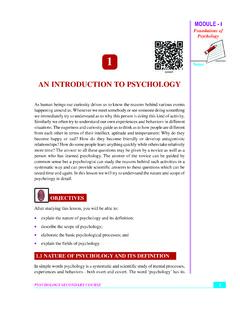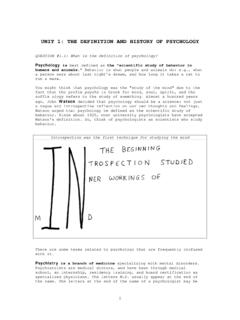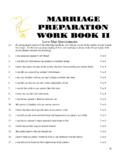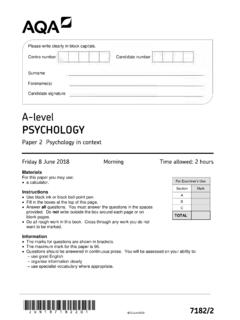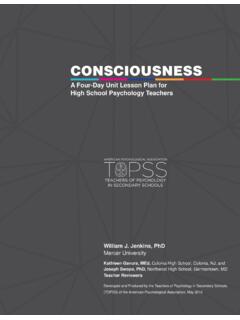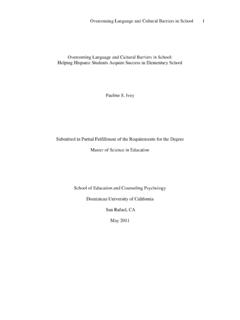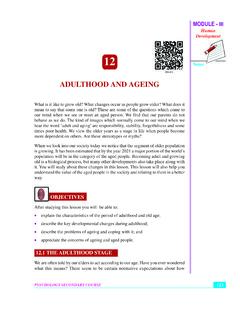Transcription of Psychoanalysis & Psychodynamic Psychology a modular …
1 Psychoanalysis & Psychodynamic Psychology a modular unit lesson plan/ teaching resource for high school Psychology teachersJames Hansell, PHD University of MichiganJosHua eHrlicH, PHD Michigan Psychoanalytic InstituteWenDy Katz, PHD Columbia UniversityHoWarD lerner, PHDM ichigan Psychoanalytic InstituteKatHerine minter, ma Westwood High School, Round Rock ISD, Austin, TXDeveloped and Produced by the American Psychological Association (APA) Committee of Teachers of Psychology in Secondary Schools in collaboration with the American Psychoanalytic Association, 20081 Psychoanalysis & Psychodynamic Psychology a modular unit lesson plan/ teaching resource for high school Psychology teachersJames Hansell, PHD University of MichiganJosHua eHrlicH, PHD Michigan Psychoanalytic InstituteWenDy Katz, PHD Columbia UniversityHoWarD lerner, PHDM ichigan Psychoanalytic InstituteKatHerine minter, ma Westwood High School, Round Rock ISD, Austin, TX2 3 Copyright 2008 by the American Psychological Association.
2 All rights reserved. No part of this publication may be reproduced or distributed in any form without prior written permission of the Introduction7 Procedural Timeline9 Content Outline21 Activity 1: Psychological Viewpoint Questionnaire (Pretest)25 Activity 2: Develop a Dream Chart27 Activity 3: Id, Ego, Superego Identification Activity29 Activity 4: Defense Mechanisms Quiz31 Activity 5: Draw a Picture Projective Test33 Activity 6: Create a Jungian Mandala35 Activity 7: Psychodynamic References in Popular Culture37 Appendix: Resources 5 Time Magazine s cover story for the November 1993 issue was titled Is Freud Dead? Newsweek presented a story titled What Freud Got Right in its November 11, 2002, issue, and the May 2004 issue of Scientific American contained an article titled Freud Returns, along with a counterpoint article titled Freud Returns?
3 Like a Bad Dream. It seems that the answer to the question Is Freud dead? is, apparently, no! With so much to cover in a high school Psychology course, particularly if you are guided by the International Baccalaureate (IB) or Advanced Placement (AP) curriculums, you may wonder if you should cover Freud and Psychoanalysis at all. One overriding point should convince you to do so: Freud and his ideas have become a part of the Western canon, with multiple sources alluding to Freudian concepts and psychoanalytic terms popping into media as diverse as television sitcoms, newspaper editorials, magazine cover stories, cartoons, Saturday Night Live skits, as well as literary works. A well-educated person knows what Freud and his followers were all about, and it adds to the richness of experience to understand these concepts, their wide applications in our culture, and the increasing validation through science of many Freudian principles and believe that Freud is dead and thus not teach Psychoanalysis at all would be undereducating our students about one of the most brilliant and influential figures of the 20th century.
4 In fact, at the turn of the new millennium (2000), A&E Television polled respected people from all walks of life from all over the world to come up with their list of The 100 Most Influential People of the Last Millennium. In that poll, Guttenberg (inventor of the printing press) was #1, and Sigmund Freud was #8. Sigmund Freud coined the term Psychoanalysis , and everything related to him and his theory is identified by that term. Eventually, Freud attracted followers, students interested in learning about Psychoanalysis . As might have been expected, some of these students, several of them geniuses in their own right, eventually came to disagree with Freud on certain key concepts or points. introductionKatherine minter, ma Westwood High School, Round Rock ISD, Austin, TX 6 Freud tended to be inflexible about his theory.
5 Consequently, when some of his followers felt compelled to break away from Freud and develop their own versions of unconscious dynamics, they could no longer employ the term Psychoanalysis . Thus, Carl Jung came up with analytical Psychology , and Alfred Adler with individual Psychology , as just two examples. Now, the umbrella term Psychodynamic encompasses not only the parent theory of Freud s Psychoanalysis , but all the offshoots of Psychoanalysis as well. It may be important to keep in mind that Psychoanalysis is widely misunderstood, both by the lay public and even by some professionals in the field. Perhaps the most common misunderstanding is that Psychoanalysis began and ended with Freud that is, as a historical, not a current, discipline. In fact, contemporary Psychoanalysis / Psychodynamic Psychology is alive and well in theory and practice.
6 Psychoanalysis is actually experiencing something of a renaissance as a therapy (partly as a backlash against quick fix therapies and medications), as a theory (since cognitive Psychology and neuroscience have recently rediscovered the unconscious), and as an interpretive tool (in other social sciences). As a result, this lesson plan attempts to cover Psychoanalysis both as a historical subject and as an important current theory and practice within modern lesson plan is designed to give you, the teacher, sufficient background to pick and choose which parts of this unit you want to teach. Certainly not all of it can be covered in a typical introductory course; there is just not enough time in any one class or longer unit to go into the detail presented here. Teachers should note that previously produced TOPSS unit lesson plans Treatment of Psychological Disorders, States of Consciousness, Motivation and Emotion, Abnormal Behavior, and Personality also include some material on Psychoanalysis / Psychodynamic theory.
7 Teachers are encouraged to use this unit plan to supplement the materials in these other unit lesson plan was developed as a modular lesson plan for high school Psychology teachers. The information provided in this unit can be used as a complete unit on Psychodynamic theory, but it has been created so that teachers can use each lesson separately during a Psychology course. Lesson I provides an overview of Sigmund Freud and Psychoanalytic Theory. Lesson II covers Psychodynamic Perspectives on Development and Personality. Lesson III, Psychoanalytic Perspectives on Dreams, can also be used while teaching states of consciousness to students. The fourth lesson focuses on Psychodynamic Theories of Motivation and Emotion. Lesson V, Psychodynamic Perspectives on Mental Disorders and Treatment, can also be used to supplement other TOPSS materials on abnormal Psychology and treatment of psychological disorders.
8 Lesson VI provides teachers with information on Neo-Freudians and Contemporary Psychodynamic The authors thank Joanne Callan, PhD, of the Alliant International University, San Diego, CA, for her review of this unit; Ludy Benjamin, Jr., PhD, of Texas A&M University, College Station, TX, for granting permission for the use of several of the activities and the discussion questions included in this unit; and Division 39 ( Psychoanalysis ) of the American Psychological Association (APA) as well as the Education Initiative of the American Psychoanalytic Association (APsaA) for their support and review of this i. overview of Freud s Psychoanalytic theories (p. 9) activity 1: Psychological Viewpoint Questionnaire (Pretest) (p. 21)lesson ii. Psychoanalytic Perspectives on Human Development and Personality (p.)
9 11)lesson iii. Psychodynamic Perspectives on Dreams (p. 12) activity 2: Developing a Dream Chart (p. 25)lesson iV. Psychodynamic theories of motivation and emotion (p. 13)activity 3: Id, Ego, Superego Identification Activity (p. 27) activity 4: Defense Mechanisms Quiz (p. 29)activity 5: Draw a Picture Projective Test (p. 31)lesson V. Psychodynamic Perspectives on mental Disorders and treatment (p. 15)lesson Vi. contemporary Psychodynamic theory (p. 17)activity 6: Create a Jungian Mandala (p. 33)activity 7: Psychodynamic References in Popular Culture (p. 35)procedural timeline9lesson i. overview of Freud s Psychoanalytic theorySee Activity 1: Psychological Viewpoint Questionnaire (Pretest) (p. 21)i. introductionA. The terms psychoanalytic and Psychodynamic are sometimes used interchangeably, but psychoanalytic properly refers more narrowly to Freudian theory, while Psychodynamic is the broader term encompassing all the theories derived from Freud s Psychodynamic theory is a large and still evolving school of thought.
10 While it is most closely associated with Sigmund Freud (1856 1939), the founder of Psychoanalysis , much of today s Psychodynamic theory differs vastly from Freud s original Psychodynamic theory, despite criticism that it is unproven, continues to be a popular and influential approach to explanation and treatment and is, in fact, supported by a substantial research basis. Psychoanalytic theory also has a particular place of importance in the field of Psychology as the first and most comprehensive theory of personality and This lesson will cover the theories of Freud; the other lessons in this unit explore Psychodynamic theories and treatments more Freud s early modelA. Freud s early clinical experiences Young Dr. Freud was particularly influenced by a case described to him by a Viennese colleague, Dr.










